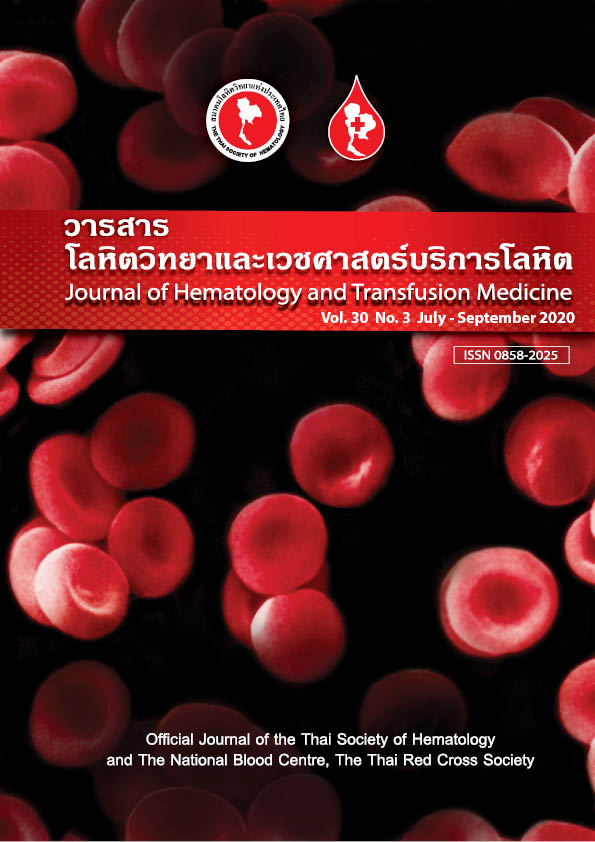Cost and outcomes of a prenatal control program for thalassemia in the lower northern region of Thailand: a hospital-based study
Keywords:
Screening, Thalassemia, CostAbstract
Background: Thalassemia is an inherited blood disorder that causes the public health problems in Thailand,
especially when there is no effective prevention and control. The cost of severe thalassemia treatment is high. Therefore, a thalassemia screening program is very important for the prevention of new cases. Objective: To estimate cost and outcomes of a prenatal control program for thalassemia in pregnant women at University and community hospitals in the lower northern region of Thailand. Method: This study was a descriptive study. Costs consisted of direct medical cost, direct non-medical cost and indirect cost. The clinical outcome was the number of cases detected. Data analysis was performed under a societal perspective. One-way sensitivity analysis was performed to explore the uncertainty around inputs. Results: A total of 733 individuals were screened with a total of 384 pregnant women. The majority of pregnant women (69.5%) were 8-20 weeks of gestational age. Most cases (75.1%) were screened with their couple. The major cost driver of the program was direct medical cost (58.2%), followed by direct non-medical cost (30.1%) and indirect cost (11.7%). The average cost of screening was 734 Baht/couples. Nine cases were detected by the program and needed to be confirmed by a standard diagnostic test. Of those, three couples were at risk for Hb Bart’s hydrops fetalis and six couples were at risk for β-thalassemia/Hb E. A pregnant woman was diagnosed as Hb Bart’s hydrops fetalis (2.6% of screened pregnant couples) Conclusion: The major cost driver of the thalassemia screening program was direct medical cost followed by direct non-medical cost
Downloads
References
Bureau of Medical Technical and Academic Affair, Department of Medical Services. Guidelines for the care of thalassemia patients in general practice. Bangkok: The War Veterans Organization Officer of Printing Mill; 2017. (in Thai)
Fucharoen S, Winichagoon P. Thalassemia in Southeast Asia: problems and strategy for prevention and control. Southeast Asian J Trop Med Public Health. 1992;23:647–55
National Health Security Office. National Health Security Fund Management Handbook 2018. Bangkok: National Health Security Office; 2017. (in Thai)
Ratanasiti T. Prevention and control of thalassemia in obstetric practice. Srinagarind Med J. 2007;22:471-6.
Chaikledkaew U, Teerawattananon Y, Khongpittayachai S, Suksomboon N. Guidelines for health technology assessment in Thailand. Nonthaburi: Health Intervention and Technology Assessment Program; 2009. (in Thai)
Julious SA. Sample size of 12 per group rule of thumb for a pilot study. Pharm Stat. 2005;4:287-91.
The Royal Thai College of Obstetricians and Gynaecologists. Guideline for prenatal screening and diagnosis of thalassemia 2009. http://www.rtcog.or.th/home/. Accessed June 28, 2019.
Jetsrisuparb A. Genetic counselling in thalassemia. J Hematol Transfus Med 2015;25:355-64.
Torcharus K, Juntharaniyom M, Wuttiwong J, Panichkul P. Prenatal diagnosis of thalassemia and cost of laboratory screening in pregnant women at Pramongkutklao Hospital. RTA Med J. 2008;61:133-42.
Jaovisidha A, Ajjimarkorn S, Panburana P, Somboonsub O, Herabutya Y, Rungsiprakarn R. Prevention and control of thalassemia in Ramathibodi Hospital, Thailand. Southeast Asian J Trop Med Public Health. 2000;31:561-5.



